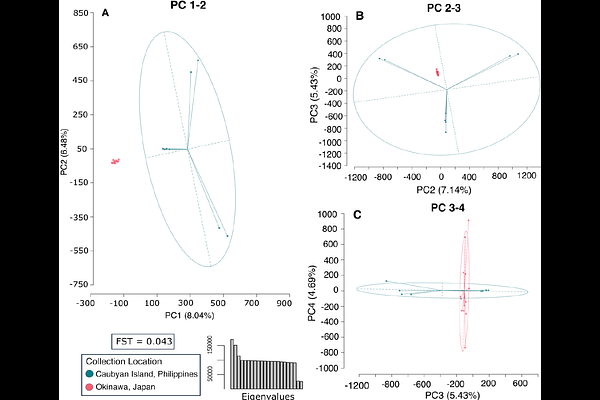Genomic Insights into a Highly Specific Marine Symbiosis Uncovers Geographic Structuring Without Co-Divergence Between Siphamia Cardinalfish and Their Bioluminescent Symbiont

Genomic Insights into a Highly Specific Marine Symbiosis Uncovers Geographic Structuring Without Co-Divergence Between Siphamia Cardinalfish and Their Bioluminescent Symbiont
Neff, E.; Gould, A.
AbstractSymbiotic relationships with microorganisms are fundamental to life on Earth, yet relatively little is known about how these interactions persist through time, how they co-evolve, and to which degree they are genetically constrained. In this study, three cardinalfish species in the genus Siphamia, S. tubifer, S. mossambica, and S. fuscolineata, were analyzed for patterns of genetic divergence along with their luminous bacterial symbionts, from locations throughout the hosts\' broad Indo-Pacific distribution. Using whole genome sequencing (WGS) of the fish light organ, we investigated whether the specificity of the association is maintained across host species and over this geographic range and whether there are any patterns of symbiont divergence associated with either. Our results indicated that the light organ symbionts of all three Siphamia species examined were identified as Photobacterium mandapamensis, suggesting a high degree of specificity of the symbiosis is conserved across hosts and geography. There was evidence of biogeographic structure in the symbiont between the three sampling regions, but no co-diversification between the hosts and their symbionts (p = 0.92). However, an analysis of single nucleotide polymorphisms (SNPs) between two S. tubifer populations sampled from Japan and the Philippines indicated some genetic differentiation (FST = 0.043) with phylogenetically-distinct clades of symbionts. Overall, these findings indicate that the association between Siphamia hosts and P. mandapamensis is highly conserved, yet there is significant genetic diversity within the symbionts driven by geography and potentially host ecology.